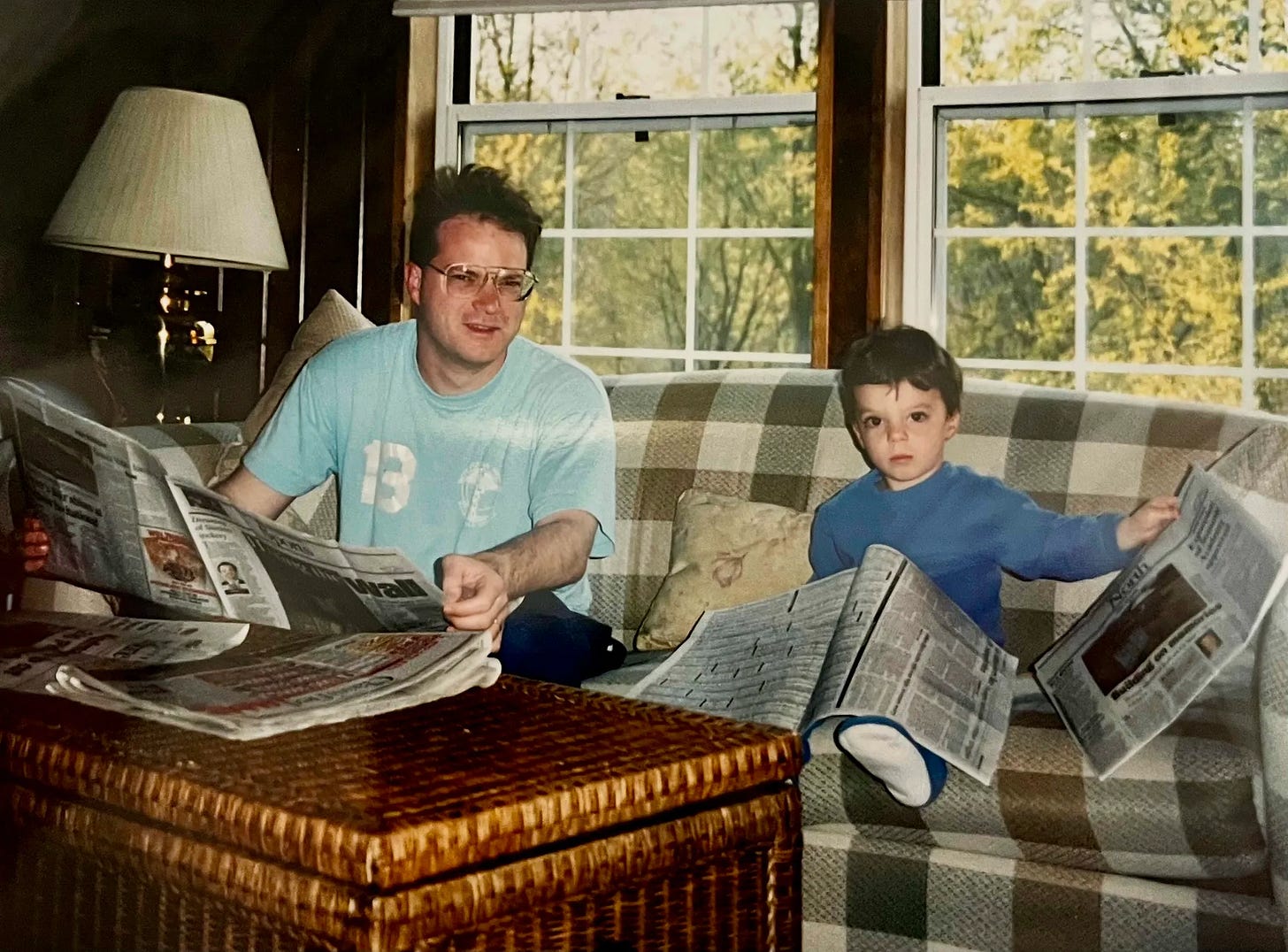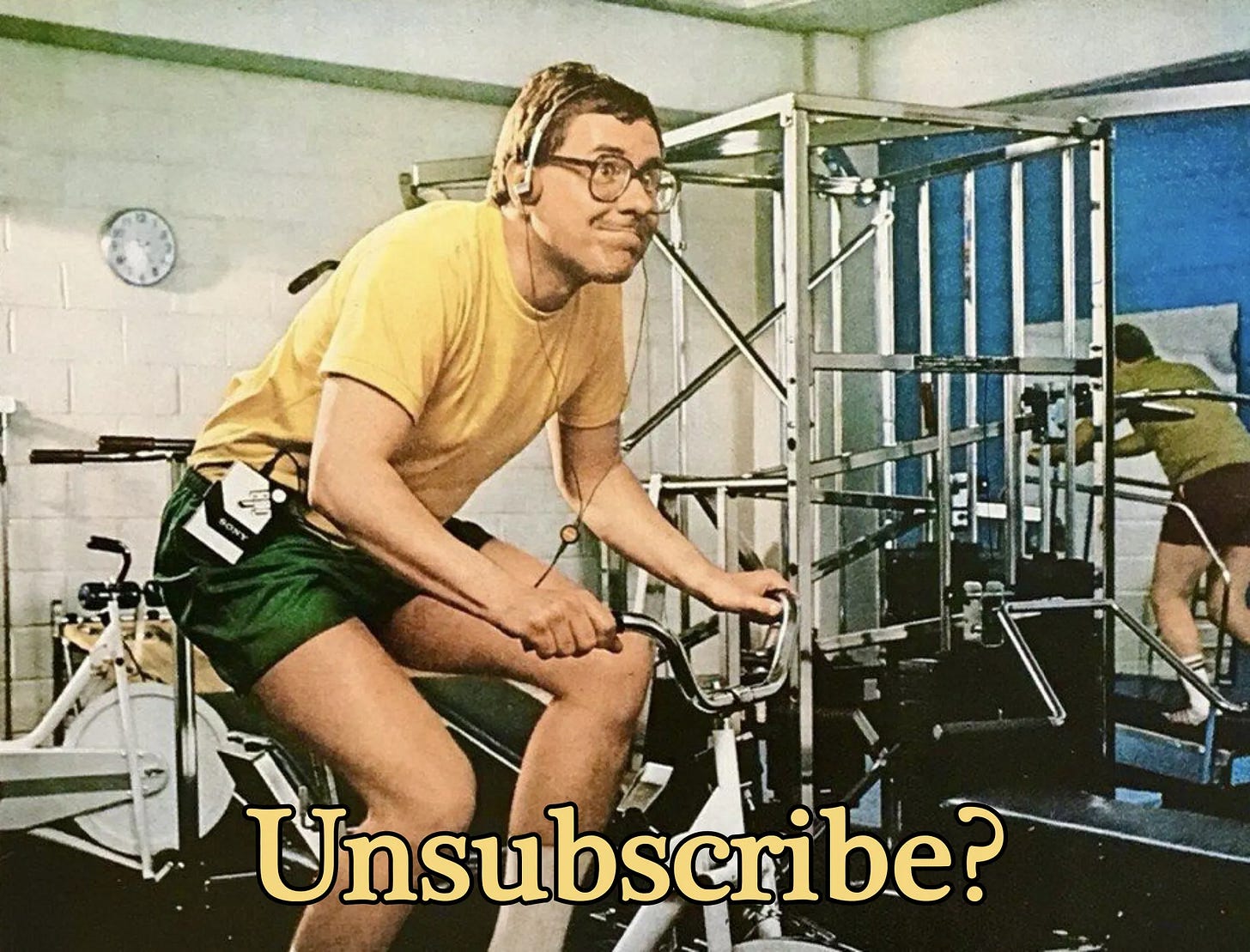Link Lariat: Subscription Spiral (and the Case for Something Solid)
Ownership’s out and subscriptions are in, but is our tolerance finally wearing thin?
It’s the dawn of a new Tuesday, and lo, Link Lariat has arrived again! I’m Ryan, your curious culture cowboy for this column, corralling content and lassoing a meaningful epiphany for you to chew on. Let’s ride.
This past month, I came face-to-face with a long-doomed nemesis: my phone’s “storage full” notification. As the grip of gigabytes galore began to take hold of my device’s performance, I decided it was time to take action — and finally move from my tenuous “system” of multiple Google accounts to one source of truth. In order to do so, I had to confront an even greater enemy: subscription services.
As I complained to my roommate about this unfolding tragedy, he mused, “It’s hard to own anything these days, isn’t it?” Nodding my assent, I signed away my photos to a life of peril where they will face deletion each year — unless I choose to pay the Google gods their going rate for sweet, sweet server space, a.k.a., the price of not worrying about a physical file brick that wouldn’t come knocking for a top-up after I took it home from Best Buy.
Back in my day, the only storage you needed was a good filing cabinet.
Which brings me to the subject of today’s links: subscriptions, ownership, and the analog revolution. Ready to wrangle them all together?
Subscriptions
More and more, everything is becoming a service — whether we want it to be or not. Subscriptions are creeping into every corner of our lives, and the offerings are starting to feel pretty bizarre.
As The Times notes, Gen Z’s growing purchasing power has been met with a proliferation of subscription services — a booming economy designed to secure consistent revenue. But while we might be more willing to click “sign me up” than ever before, Harvard Business school says that we might not be entirely happy about it. Subscriptions can provide simplicity, benefitting both the business and the consumer, but there’s a breaking point — not just in the number of services we’re willing to pay for, but in what types of products even make sense as a subscription (Heated seats? Restaurants? Hello??). And while our digitized world makes it easy for companies to turn any software-controlled amenity on and off, it doesn’t mean that they should.
Spotify
When our subscriptions become a cultural staple, companies can take advantage of their captive audiences for their own gain — until the erosion of the service gets to be too much.
At the turn of 2025, Harper’s Magazine broke a story about Spotify’s “Perfect Fit Content” program — which fills the company’s most popular playlists with music from commissioned, fake artists, minimizing royalty payments. It’s just one example of various consumer frustrations with the platform, which, as The New Yorker writes, launched with the slogan “music for everyone” but now may as well be “be grateful for whatever music we give you.” As consumers recognize this pattern of enshittification (more on that in last month’s Link Lariat! 🤠), they’re willing to jump ship to a new provider despite the former’s cultural cachet — or leave the model entirely.
Simplicity
In the face of a world where we own less and the services we pay for worsen, are we headed for the embrace of tangible, analog technology?
The New Yorker resolves that perhaps the best way to hold onto one’s music is to return to the trusty MP3 player. Vox seems to agree, examining the analog renaissance: flip phones, vinyl records, print publications (let us know if you want a So What zine 😉), and beyond. Whether it’s the resolution of ownership woes, the rush of tangible engagement, or the reprieve from the digital world, there’s a sense that a modern adoption of our analog pasts could pull us back to the present.
The So What
So, what’s a culture-maker to do in a world of subscriptions, simulated ownership, and digital fatigue? The point isn’t necessarily to reject digital tools, but to rethink how we use them. In a world that’s increasingly rented, not owned, there’s power in creating things that feel grounded. Whether it’s a product, a playlist, or a piece of content, audiences should feel like it’s something they get to save, not have to pay for. Because in an age of rising costs to store our ephemeral everything — even the things we’re not sure we want to keep — the most disruptive thing may just be the thing that can stick around (or at least justify its rent).
✉️ If you haven’t yet subscribed, click the link below so you don’t miss a thing.




